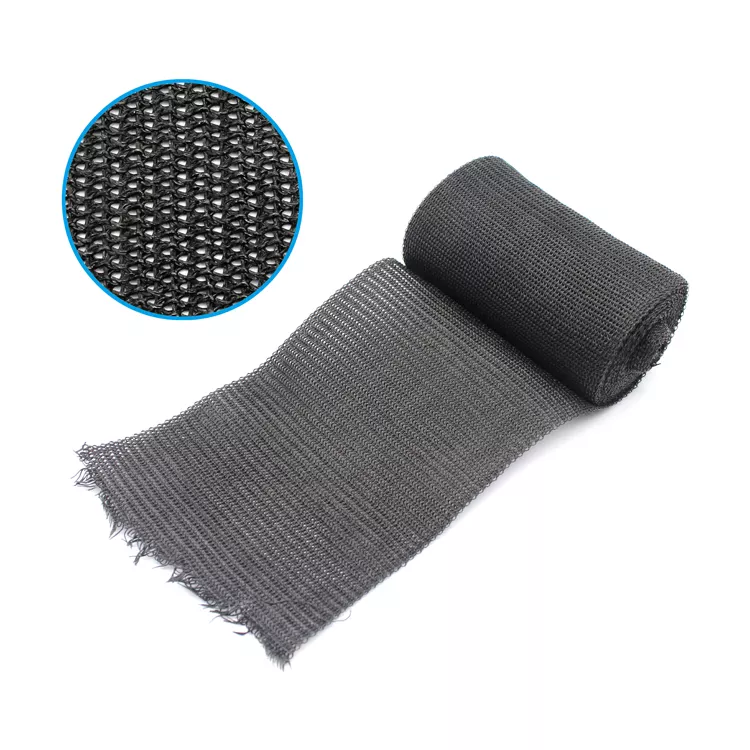The Importance of Fireproof Drywall Tape in Construction
In the world of construction and interior design, the materials we use can significantly influence the safety and longevity of a structure. One such material that has gained attention in recent years is fireproof drywall tape. As fire safety becomes an increasing concern for homeowners and builders alike, understanding the benefits and applications of fireproof drywall tape is essential.
What is Fireproof Drywall Tape?
Fireproof drywall tape is a specialized adhesive tape that is used to seal joints and seams in drywall, specifically in areas that require enhanced fire resistance. This tape is commonly made from a fiberglass mesh material that is treated with fire-resistant properties. Unlike standard drywall tape, which may not withstand high temperatures, fireproof drywall tape can help delay the spread of flames in the event of a fire.
Why is Fireproof Drywall Tape Necessary?
Building codes and regulations often dictate the necessity of fire-resistant materials in certain areas of construction, such as commercial buildings or multi-family dwellings. Fireproof drywall tape is crucial because it enhances the fire resistance of drywall systems, significantly contributing to overall fire safety.
1. Enhanced Fire Safety One of the primary reasons to use fireproof drywall tape is to improve the fire-resistance rating of drywall installations. In the event of a fire, this tape can prevent flames from easily penetrating the seams between drywall panels, thereby slowing down the spread of the fire.
2. Compliance with Building Codes Many local and national building codes require the use of fire-resistant materials in specific applications. Using fireproof drywall tape ensures compliance with these regulations, helping builders avoid potential legal issues and safety hazards.
3. Prevention of Smoke and Gas Spread In addition to fire spread, the proper sealing of drywall joints can help prevent smoke and toxic gases from escaping into other areas. Fireproof drywall tape extends the integrity of the drywall system, providing both fire and smoke barriers that can protect occupants.
fireproof drywall tape

4. Versatility and Application Fireproof drywall tape can be used in various settings, including residential, commercial, and industrial projects. It is suitable for both new constructions and renovations, making it a practical choice for contractors and builders looking for reliable safety solutions.
5. Ease of Use Most fireproof drywall tapes are designed to be easy to apply, similar to standard drywall tapes. They can be cut and shaped as needed, and many come with pre-applied adhesive for quick installation. This ease of use allows contractors to maintain efficiency while adhering to safety standards.
Installation Guidelines
To effectively use fireproof drywall tape, installers should follow a few key guidelines
- Surface Preparation Ensure that the drywall surfaces are clean and free from dust, grease, or debris. This ensures a better bond between the tape and the drywall. - Application Apply the fireproof drywall tape over the joints of the drywall panels. It’s crucial to press the tape firmly to eliminate any air bubbles and ensure a tight seal. - Finish with Joint Compound After applying the tape, a layer of joint compound should be spread over it. This not only secures the tape but also provides a smooth finish that can be painted or textured as desired.
Conclusion
In an age where safety is paramount, the use of fireproof drywall tape is more than just a precaution; it's a necessity. Whether you're a builder aiming to meet code requirements or a homeowner looking to ensure your living space is as safe as possible, understanding the importance of fireproof drywall tape can make a significant difference.
With its ability to enhance fire resistance, prevent smoke migration, and comply with building regulations, fireproof drywall tape is a smart investment for any construction or renovation project. As industry standards continue to evolve, incorporating fireproof materials into building practices will remain a critical component of creating safe and durable structures for the future.
-
XIANGFAN Rubber Tape-Ultimate Solutions for All Your Insulation NeedsNewsJun.24,2025
-
XIANGFAN Rubber Tape-Protection for Industrial and Residential ApplicationsNewsJun.24,2025
-
XIANGFAN Rubber Tape: Superior Safety and Sealing for Demanding EnvironmentsNewsJun.24,2025
-
XIANGFAN Rubber Tape: Reliable Solutions for Every Electrical ChallengeNewsJun.24,2025
-
XIANGFAN Electrical & Industrial Tape: Powering Reliability Across IndustriesNewsJun.24,2025
-
XIANGFAN Electrical & Industrial Tape: Excellence in Every ApplicationNewsJun.24,2025
